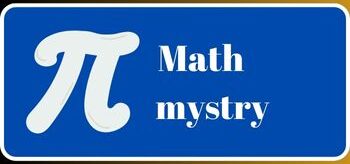In the world of abstract algebra, Rings and Fields serve as fundamental frameworks that extend basic arithmetic concepts into more complex systems. These structures provide a deeper understanding of how addition and multiplication interact across different mathematical settings.
A Ring is an algebraic structure that features two operations—addition and multiplication—governed by properties like associativity and distributivity. Unlike standard arithmetic, rings often allow non-commutative multiplication, making systems like integers and matrices fascinating to explore.
A Field is a special kind of ring with additional properties: multiplication is always commutative, and every non-zero element has a multiplicative inverse. Fields are critical in fields such as number theory, cryptography, and algebraic geometry. Examples include the rational numbers, real numbers, and finite fields used in coding theory.
What Will I Learn?
In a course or study of rings and fields, you can expect to learn the following essential concepts:
- Basic Definitions: Familiarizing yourself with the fundamental definitions and properties of rings and fields, including both examples and non-examples.
- Ring Properties: Exploring the characteristics of rings, such as commutativity, associativity, and distributivity, as well as concepts like unity and zero divisors.
- Types of Rings: Understanding the various types of rings, including integral domains, fields, and polynomial rings, along with their distinctive features.
- Field Properties: Gaining insight into the properties of fields, including the existence of multiplicative inverses and the differences between finite and infinite fields.
- Homomorphisms: Learning about ring and field homomorphisms, which are mappings that preserve the algebraic structure between two sets.
- Ideal Theory: Studying ideals in rings, including principal ideals, maximal ideals, and the connections between ideals and ring homomorphisms.
- Factorization: Exploring the factorization of polynomials and the significance of unique factorization domains.
- Applications: Investigating practical applications of rings and fields in areas such as number theory, cryptography, coding theory, and algebraic geometry.
By the end of your studies, you will have a strong foundation in rings and fields, equipping you to address complex algebraic problems and apply these concepts in various mathematical settings.
Targeted Audience
The intended audience for a course or resource on rings and fields generally includes:
Students: Undergraduate and graduate students in mathematics, especially those focusing on algebra or abstract algebra.
Researchers: Academics and researchers in mathematics who need a strong grasp of rings and fields for their work in fields such as number theory and algebraic geometry.
Professionals: Individuals in areas like cryptography, computer science, and coding theory who apply concepts from rings and fields in practical contexts.
Educators: Teachers and instructors looking to deepen their understanding of rings and fields to effectively convey these concepts to their students.
Lifelong Learners: Anyone interested in mathematics who wishes to explore the topics of rings and fields for personal growth or career advancement.
This diverse audience will benefit from content specifically designed to meet their needs and skill levels.



